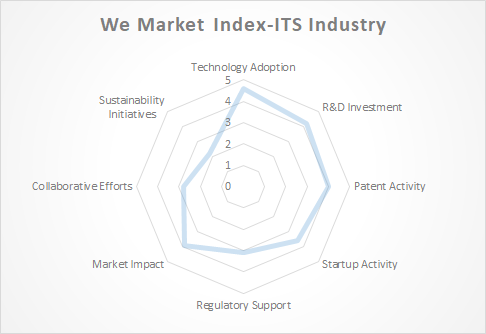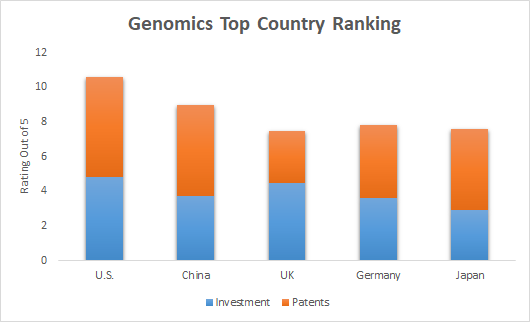The Silicon Revolution: The Evolving Landscape of AI Chips Industry
Introduction
In the realm of technology,
artificial intelligence (AI) has become an undeniable force reshaping
industries and societies alike. At the heart of this AI revolution lies a crucial
component - AI chips. These specialized microprocessors are the brains behind
AI applications, and the AI chips industry has been evolving rapidly to keep up
with the growing demand for AI-powered solutions. In this blog, we'll delve
into the fascinating world of AI chips, exploring their history, current state,
and the exciting possibilities they hold for the future.
The Genesis of AI Chips
The concept of AI is not new; it
has been around for decades. However, it was the convergence of two key factors
that sparked the AI chips revolution: the availability of large datasets and
advances in deep learning algorithms. These breakthroughs led to a surge in AI
research and applications, requiring hardware solutions that could handle the
computational demands of AI workloads.
The first AI chips were designed
to accelerate the training and inference processes of neural networks. Graphics
Processing Units (GPUs), originally developed for rendering graphics in video
games, found a second life as powerful AI accelerators due to their parallel
processing capabilities. NVIDIA's CUDA architecture, introduced in 2006, played
a pivotal role in this transformation.
The Current Landscape
As the demand for AI continues to
grow, the AI chips industry has expanded to include a variety of players, each
with their own specialized offerings. Here are some of the key players and
trends in the industry:
NVIDIA: NVIDIA remains a dominant
force with its GPUs, used in data centers worldwide for AI training and
inference. The company has also developed the Tensor Core architecture,
catering specifically to AI workloads.
Intel: Intel is making
significant strides with its AI-focused processors like the Nervana Neural
Network Processor (NNP) and Xe GPUs, designed to compete with NVIDIA's GPUs in
the AI space.
Google: Google has developed its
Tensor Processing Unit (TPU) designed for both inference and training. These
TPUs power Google's AI services and are available through its cloud platform.
Startups: Numerous startups are
entering the AI chips market, developing specialized hardware optimized for
specific AI applications such as autonomous vehicles, natural language
processing, and healthcare.
Edge AI: With the growing demand
for AI at the edge (on devices like smartphones and IoT devices), companies are
developing AI chips optimized for low power consumption and real-time
processing.
Customization: Some organizations
are exploring the customization of AI chips for their specific needs, leading
to the emergence of application-specific integrated circuits (ASICs) tailored
to unique AI workloads.
Challenges and Innovations
The AI chips industry faces
several challenges as it continues to evolve. Power efficiency, scalability,
and compatibility with AI software frameworks are some of the primary concerns.
Companies are working to address these issues through innovations such as:
Architectural advancements:
Developing chip architectures optimized for AI workloads, which may include
dedicated AI cores, improved memory hierarchies, and enhanced
interconnectivity.
Quantum computing: Exploring the
potential of quantum processors to further accelerate AI calculations,
especially for complex simulations and optimization problems.
AI in healthcare: Creating AI
chips tailored for medical imaging and drug discovery, promising to
revolutionize healthcare with faster and more accurate diagnoses and
treatments.
AI ethics: Integrating
hardware-level security features to ensure the ethical use of AI and protect
against malicious AI attacks.
AI democratization: Efforts to
make AI chips more accessible to smaller companies and researchers by reducing
costs and increasing availability.
The Future of AI Chips
The AI chips industry shows no
signs of slowing down. As AI continues to permeate various sectors, from
healthcare to transportation to finance, the demand for specialized hardware
will only increase. Here's what we can expect in the near future:
More efficiency: AI chips will
become even more power-efficient, allowing for AI to be integrated into devices
with limited energy resources.
Quantum-AI synergy: The
convergence of quantum computing and AI could lead to breakthroughs in AI
capabilities, enabling complex simulations and solving optimization problems at
unprecedented speeds.
AI-optimized hardware for
emerging technologies: As augmented reality (AR), virtual reality (VR), and
mixed reality (MR) gain prominence, AI chips will play a crucial role in
enhancing these immersive experiences.
Interoperability: Efforts to
create more standardized AI chip interfaces to improve compatibility with
various AI frameworks and software libraries.
Conclusion
The AI chips industry is at the forefront of the
AI revolution, driving innovation and enabling the development of AI-powered
solutions that were once considered science fiction. As technology continues to
advance, we can expect AI chips to become even more powerful, efficient, and
accessible, shaping the future of industries and redefining the possibilities
of artificial intelligence. It's an exciting time to witness the silicon
revolution that is propelling AI to new heights.




